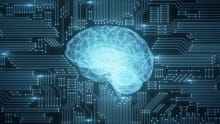5 stage HR maturity model: Integrate processes for better results
Get Set Learn Read similar articles

A critical function within the realm of HR, L&D plays a crucial role in attracting, building and retaining talent. In a recent webinar with People Matters, Kieran King, Vice President of Global Customer Insight at Skillsoft, shared that “the more a company’s learning and talent agenda align with the overall business strategy and integrate with one another, the more effective HR will be in ensuring business productivity.” She added that CLO Magazine has also deemed the trend effective. It has become essential for HR professionals today to integrate processes, people flows and systems in order to deliver a significant impact to business goals.
How can a cohesive learning and talent framework help?
King mentioned the vital need for a singular learning and talent maturity framework, adding that the problem with most distinct maturity models is that they address pressing talent issues in isolation. Working out solutions in silos, using two different maturity models for these functions often brings about more inefficiency and confuses company employees. “Separatism,” as King calls it, has done more harm than good. By creating a singular maturity model, Skillsoft has been able to design a more integrated and impactful five-stage model which looks at aligning the two functions for greater efficacy.
Skillsoft’s benchmarking framework was developed based on behavioral observations of over 6700 companies and 45 million employees.
The five stages of maturity
Organizations today have an appetite to grow. As a result, HR professionals have had to play a critical role to attract and scale talent within these organizations. Skillsoft’s five-stage maturity model clearly demarcates the different stages that HR professionals need to go through to evolve their talent management and learning practices, with transformation being a crucial, separate stage.
- In the first stage, learning and talent are two distinct processes which operate in silos. This stage is marked by an organizational culture that is conventionally hierarchical and less collaborative in nature. There is also a high probability that learning and talent functions run on two completely different platforms, isolating one’s journey from the other. This stage’s reactive approach makes the learning function significantly less agile. This stage is around HR conforming to meet a set of objectives.
- “The Stage Two organization is called the target organization,” says King. “Here the HR functions start to understand that there are pathways they can create between learning and talent management processes.” This is the stage where executives begin to show more interest in raising employee engagement by linking learning and talent management. Learning and HR heads also initiate a more proactive relationship with the business to understand the business problems better and create plans accordingly.
- The third stage is a transformative period. At this stage the organization gets rid of the compartmentalization of learning and HR activities, to make more holistic processes that increase employees’ engagement and motivation. This stage also represents a shift from the ‘command and control’ type of management and puts employees in the driver’s seat to allow them to chart their own career paths.
- Stage four is referred as the continuous stage. The company has undergone transformation and people management practices are relatively stable. Employees have higher engagement levels and are motivated to perform well. As King puts it, “In this stage, learning and talent experiences are cohesive, continuous and personal.” The workforce culture is responsive and adaptive to change. HR operates as talent architect with a greater contribution to business productivity.
- Fully mature, stage five organizations have become self-developing organizations. At this level, the business fully empowers individuals to take control of their own development and career trajectories and, as a result, attracts the best talent in the market. The HR team in this stage has well-established long-term and short-term strategies. They now have the ability and budget to create world-class employee experiences which are not isolated to talent management or learning, but consider the end to end experience.
An organization's maturity is often a critical factor in implementing a learning management system (LMS). A clear understanding of HR’s current maturity level helps organizations reassess their position and create a growth strategy that aligns with their needs.
With market forces today forcing firms to rapidly morph their business models, HR is consequently undergoing a massive transformation on all fronts. And so has been the tale of most companies, irrespective of their size, their industries and their modes of operation. Forces of volatility, uncertainty, complexity and ambiguity (VUCA) have had an impact across the board. The L&D departments in most companies have not escaped. Understanding their current maturity levels and integrating talent management and learning functions would help HR professionals contribute to business productivity more effectively.







